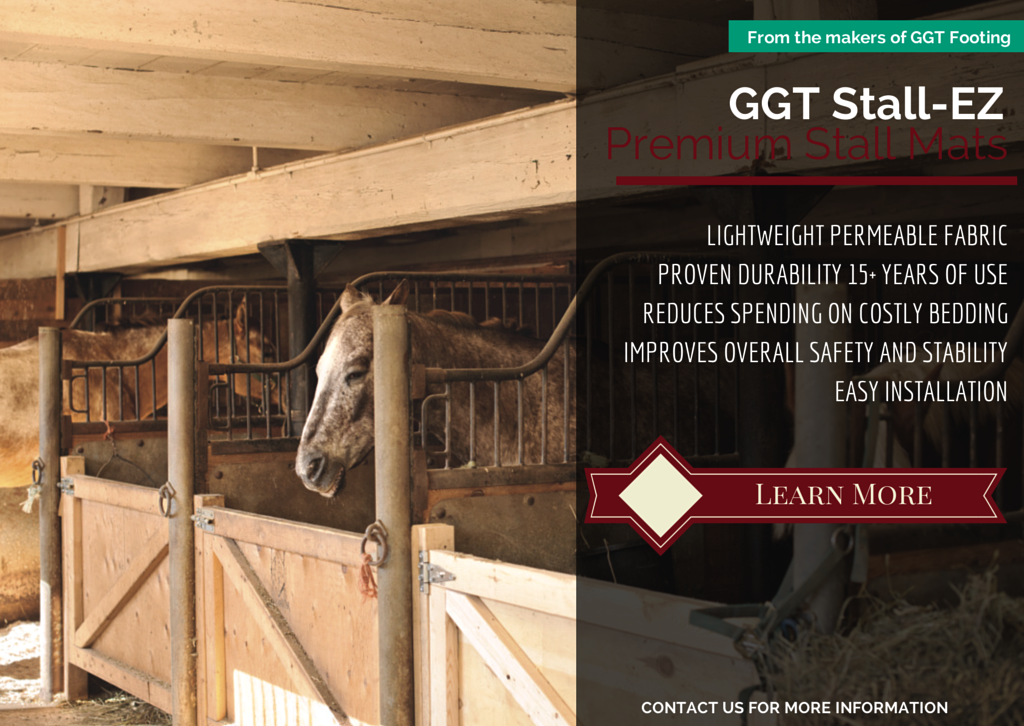High-quality sod has often been said to be the perfect horse footing. It provides a stable, cushioned landing for the foot, doesn't shift underfoot, provides good traction, and is not dusty. However, sod does not stand up to the demands of a busy riding arena, and therefore equestrians have been creating alternatives to sod.

Caption: The perfect footing is not deep, yet absorbs concussion well; is not slippery; and provides good traction.
A wide variety of materials are used to construct horse arena footing. In general, these consist of additives that are mixed into sand to improve the footing quality of the sand. One oft-overlooked aspect of arena footing is the type of sand used. Due to high shipping costs, most horse facilities end up using whatever sand is locally available, which can dramatically affect the final footing characteristics. In fact, when constructing new footing, sometimes the best approach is to consider what sand(s) are available locally, and then consult with experts to see what type(s) of additives work best with the available sand.
The perfect footing is not deep, yet absorbs concussion well; is not slippery; and provides good traction. Very deep footing may appear to be soft and gentle, but it can be very fatiguing to the horse to work in, and can cause soft-tissue injuries. Deep footing does not provide a firm surface for the horse to land on or push off against. The footing should be stable (does not shift unpredictably underfoot), as unstable footing can cause twisting of the horse's limbs and contribute to injury. Dust can be a serious problem in riding arenas, causing respiratory diseases and eye irritation to horse and rider alike- a good footing is not dusty. Another aspect of a high-quality footing is its resistance to compaction. No one wants to have to drag their arena multiple times a day.
Sand additives
There are two main types of additives, rubber or textiles. Some additives use both. As a general rule of thumb, rubber adds cushion, and textile adds stability.
German geotextile (GGT) footing is a combination of synthetic felt and polyester fibers. It stabilizes sand to produce a footing that drains well, is resistant to compaction, and absorbs impact to reduce concussion on the horses. Advantages of GGT footing include retains moisture well (reduces the intervals between waterings), not dusty, rarely freezes, is stable for up to ten years, and is nontoxic and nonallergenic.
Protex is a crumb-rubber product made from recycled tires that is mixed with sand to add cushion to the surface. Athletex is made from recycled athletic shoes. It contains both textiles from the uppers of the shoes and crumb-rubber from the soles. Athletex improves the stability and cushion of the sand footing.
Innovators are continually tweaking their footing additive formulas and coming up with new combinations of textiles and rubber that offer different advantages.
For more information about arena footing and what will work best for you with your facility and budget, do not hesitate to contact us.


